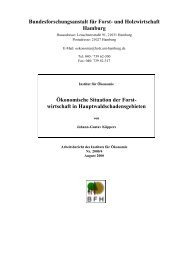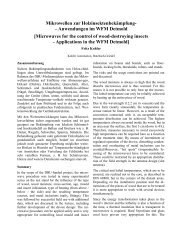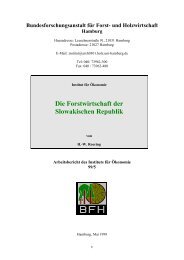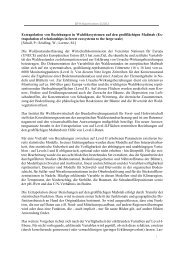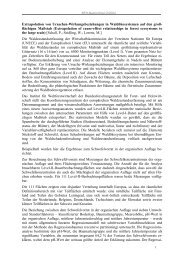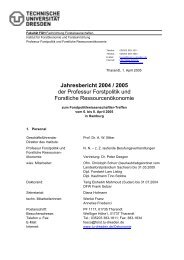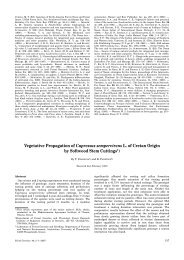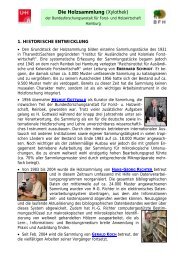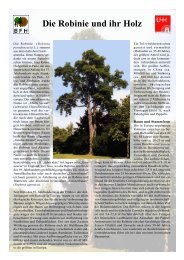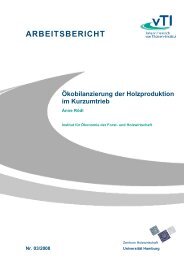kinetic response of thermosetting adhesive systems to heat
kinetic response of thermosetting adhesive systems to heat
kinetic response of thermosetting adhesive systems to heat
Create successful ePaper yourself
Turn your PDF publications into a flip-book with our unique Google optimized e-Paper software.
Activation Energy Index<br />
1,00<br />
0,95<br />
0,90<br />
0,85<br />
ABES<br />
DSC<br />
Gelation time<br />
(2,09) (1,46)<br />
UF#2 UF#3 UFm#4<br />
UFm#5<br />
Adhesive System<br />
Figure 6. Ratios <strong>of</strong> activation energy <strong>of</strong> the <strong>adhesive</strong> <strong>systems</strong> derived from DSC, ABES<br />
and gelation time methods on a basis <strong>of</strong> reactivities for <strong>adhesive</strong> #2.<br />
Composites testing system (ComTes)<br />
Design and testing procedure:- ABES has been modified in order <strong>to</strong> enable the combined<br />
effects <strong>of</strong> <strong>adhesive</strong> and fiber network characteristics on bonding <strong>of</strong> wood-based composite<br />
materials <strong>to</strong> be explored. Resinated (but uncured) miniature fiber discs (17.5 mm in diameter and<br />
9-mm in thickness) can be pressed under controlled conditions <strong>of</strong> temperature and tested in shear<br />
mode perpendicular <strong>to</strong> the forming direction. For this purpose, after forming, two samples are<br />
pressed and tested simultaneously. Aspects <strong>of</strong> the system are shown as Figure. 7. Two circular<br />
temperature-controlled pressing heads (�) act uniaxially on the outer surfaces <strong>of</strong> the samples,<br />
while and one angular block (�) in the center with inserted cartridge <strong>heat</strong>ers are used <strong>to</strong> transfer<br />
<strong>heat</strong> and load on<strong>to</strong> the samples surfaces. To impede passive spreading <strong>of</strong> the samples, the fiber<br />
discs are peripherally constrained by PTFE (Teflon) cylinders (�) that are pneumatically driven<br />
back prior <strong>to</strong> testing. Small aluminum discs are glued simultaneously on<strong>to</strong> the discs’ surfaces<br />
with cyanoacrylate <strong>adhesive</strong> <strong>to</strong> transfer shear forces from the shear bar (�) in<strong>to</strong> the samples.<br />
Usually, the samples fail in the core layer <strong>of</strong> the 3 mm thick samples because <strong>of</strong> the slightly<br />
delayed temperature increase in this plane.<br />
1<br />
1<br />
2<br />
fiber discs<br />
Figure 7 - Overview (left) and detail (right) <strong>of</strong> the Composites Testing System.<br />
4<br />
4<br />
3




